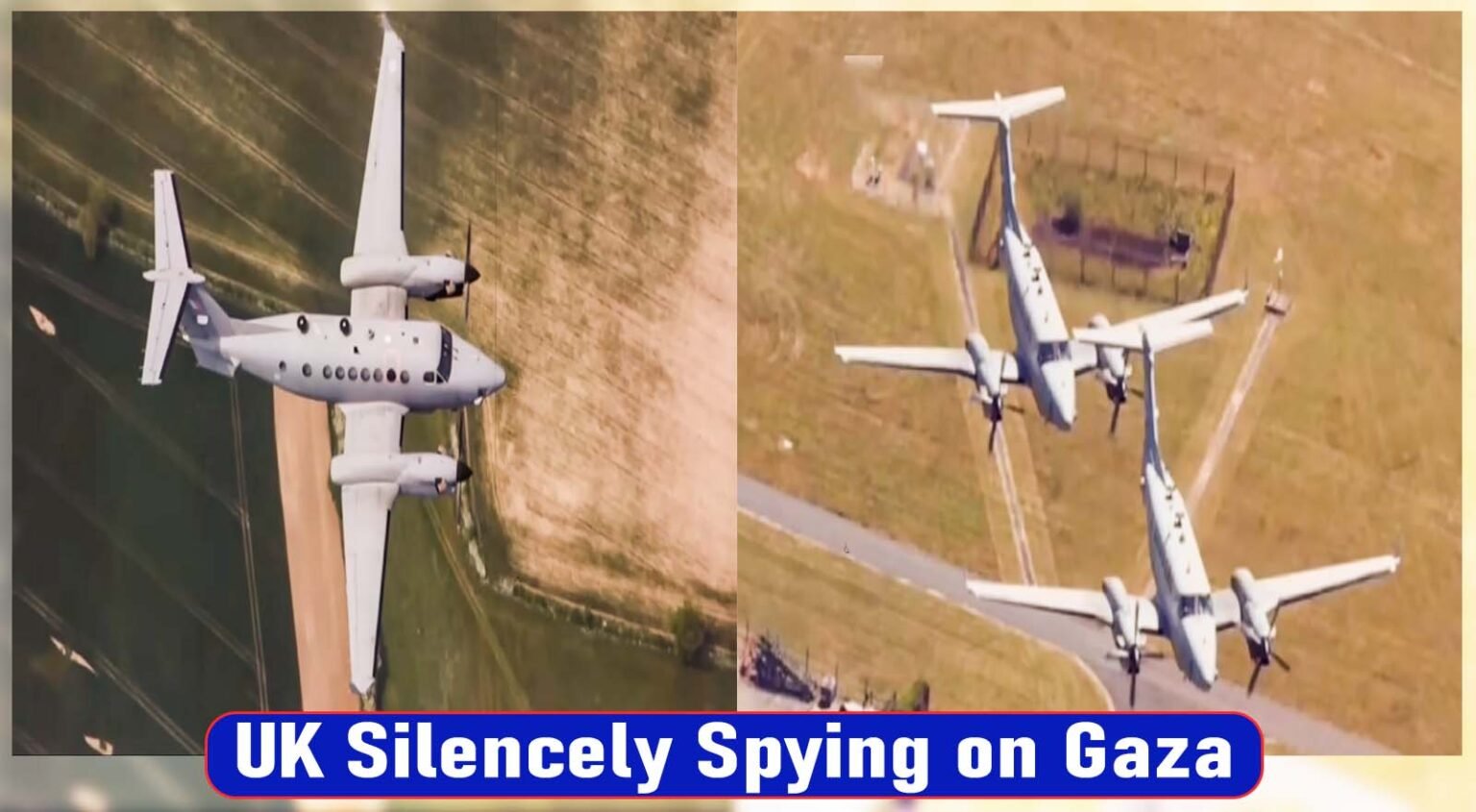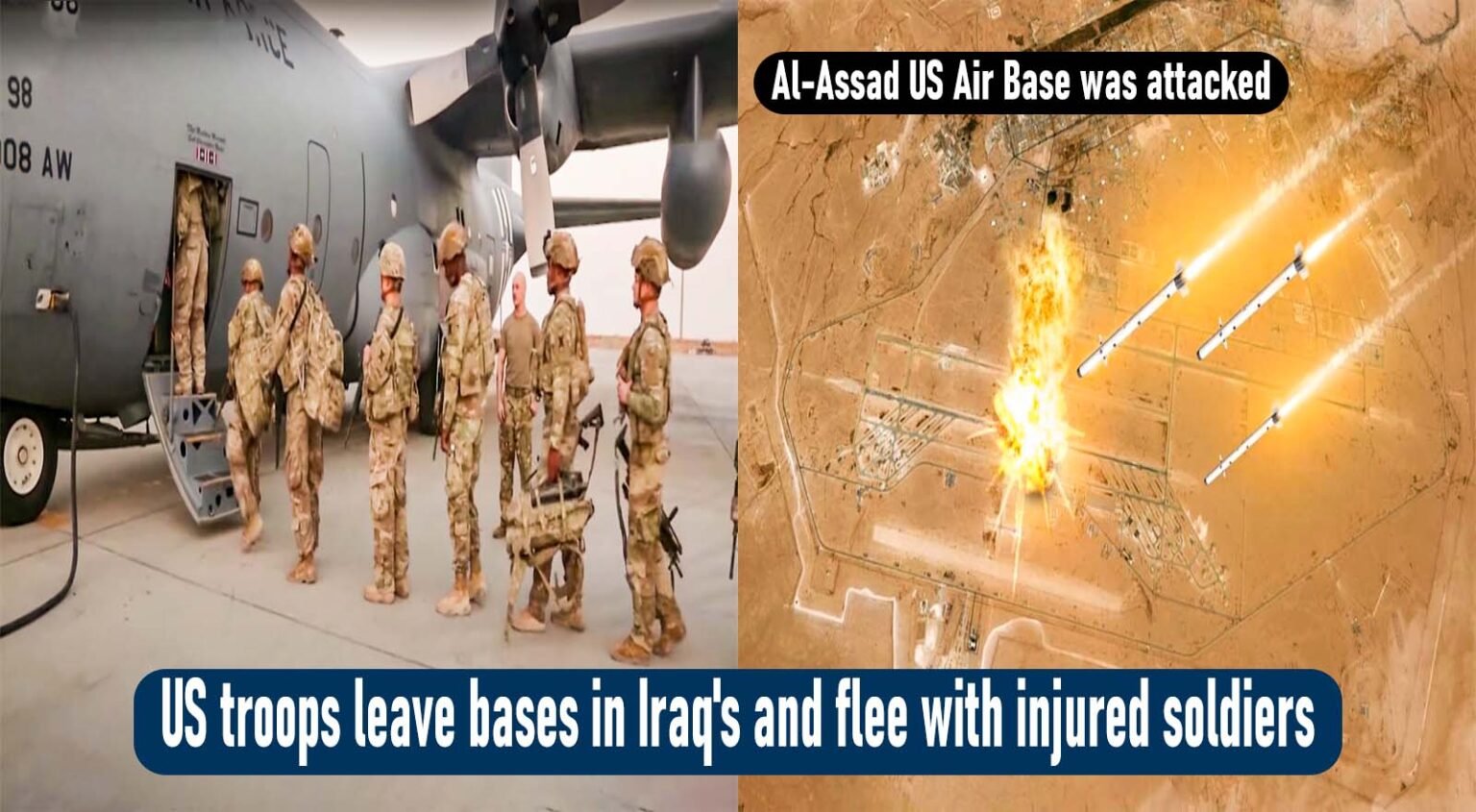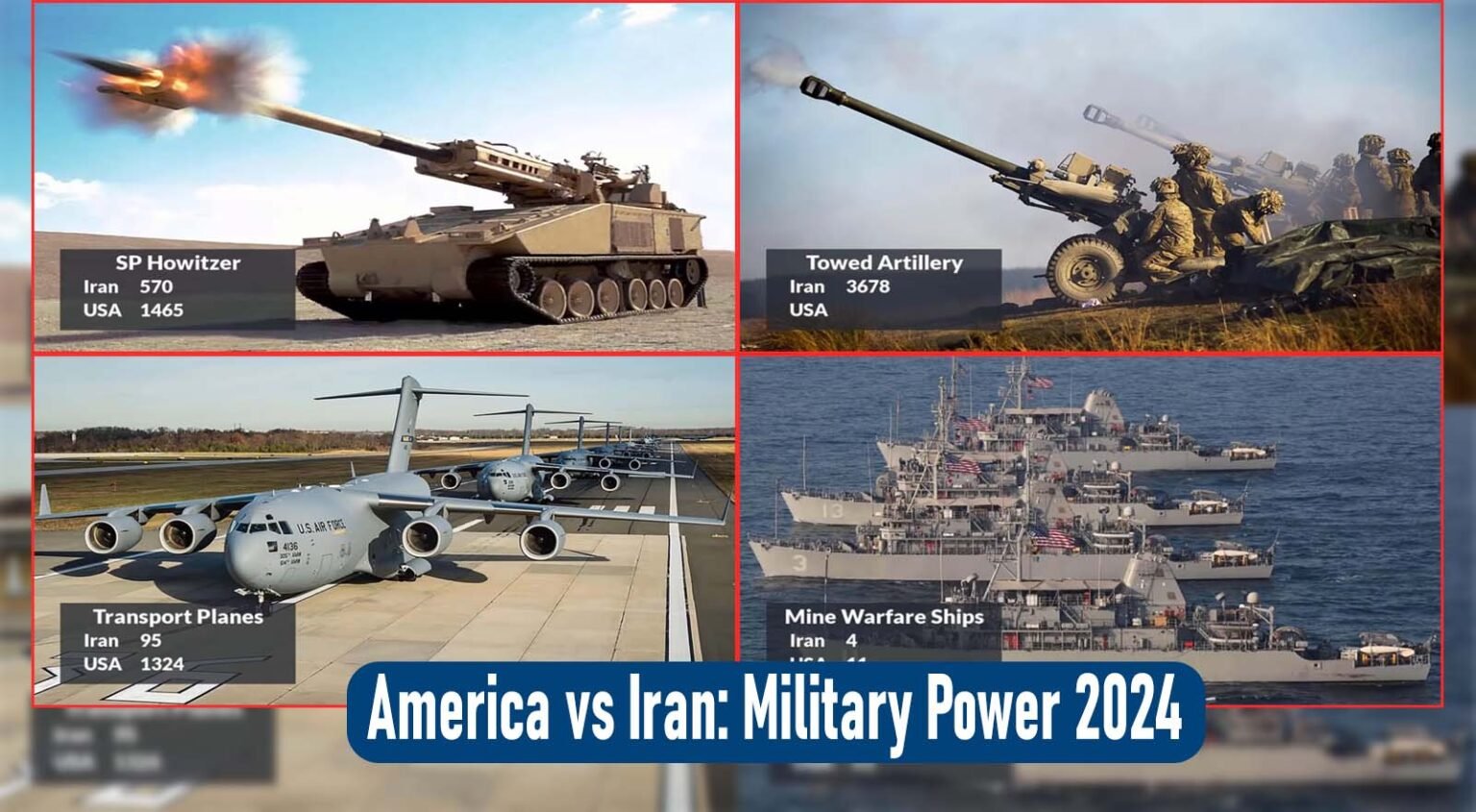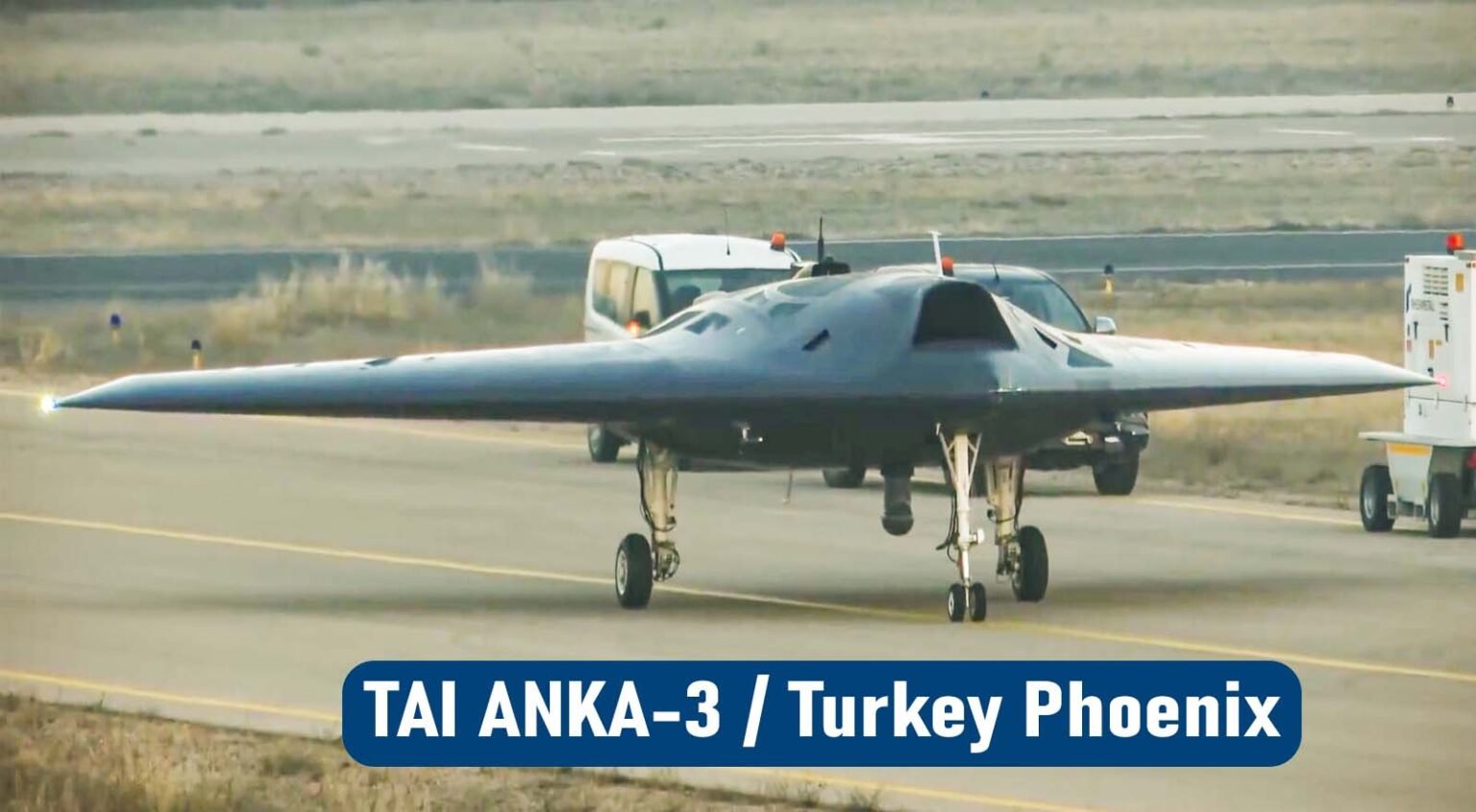Designed in the 1960s by General Dynamics for the US Air Force, the F-16 Fighting Falcon is a supersonic, multi-role fighter aircraft with a single engine. It is renowned for its great mobility, agility, and combat efficiency and has been flown by more than 30 countries worldwide. Its single General Electric F110 turbofan engine allows it to reach a maximum speed of Mach 2.05. It has an M61 Vulcan gun that fires up to 6,000 rounds per minute, and it can carry a variety of weaponry, such as rockets, bombs, and air-to-air missiles. Currently being manufactured by Lockheed Martin, the F-16 has been in continuous production for more than 40 years.
The F-16 is one of the most produced fighter aircraft in history, having been produced in excess of 4,600 units. One of the most economical fighter aircraft to operate, the F-16 is notable for being the first to do 9-g maneuvers, featuring a frameless bubble canopy for improved sight, a side-mounted control stick, and a reclined seat to lessen the impact of g-force on the pilot.
You can check out the fighters F-22 Raptor, Sukhoi Su-57, F-35 Lightning II, TF-X KAAN, KAI KF-21 Boramae and Chengdu J-20.
We have compared this Sukhoi Su-57 vs F-35 Fighter jet, f-22 vs su-57, f-22 vs j-20, kf-21 Boramae vs tf-x KAAN, f-22 Raptor VS kf-21 Boramae, F-22 Raptor VS TAI TF-X KAAN and America vs Russia military power comparison 2024. If you are interested in the military, you can check it out by clicking here
F-16 Development
F-16 Primary Stage of Development
The energy-maneuverability hypothesis, which attempted to simulate a fighter aircraft’s performance in battle, was developed as a result of the US involvement in the Vietnam War. This idea, which was created by mathematician Thomas Christie and colonel John Boyd, advocated for a tiny, light aircraft with a higher thrust-to-weight ratio and less energy loss. Boyd and his organization, the Fighter Mafia, obtained Department of Defense funds in the late 1960s for Northrop and General Dynamics to research theoretically-based design approaches.
F-16 Final Outlook and First Take-off
The USAF’s leadership realized the budgetary limits and chose to fund the Advanced Day Fighter idea, dubbed F-XX, despite objections from Air Force supporters of the F-X concept. Boyd was a significant member of the Air Force Prototype Study Group when it was formed in May 1971. Of the six concepts, two were funded, one of which was the Lightweight Fighter (LWF). A 20,000-pound air-to-air day fighter, the LWF was designed for battle at speeds between Mach 0.6 and 1.6 and altitudes between 30,000 and 40,000 feet. Since the USAF had no concrete intentions to acquire the winner, the manufacturing plan was purely speculative.
The USAF’s leadership realized the budgetary limits and chose to fund the Advanced Day Fighter idea, dubbed F-XX, despite objections from Air Force supporters of the F-X concept. Boyd was a significant member of the Air Force Prototype Study Group when it was formed in May 1971. Of the six concepts, two were funded, one of which was the Lightweight Fighter (LWF). A 20,000-pound air-to-air day fighter, the LWF was designed for battle at speeds between Mach 0.6 and 1.6 and altitudes between 30,000 and 40,000 feet. Since the USAF had no concrete intentions to acquire the winner, the manufacturing plan was purely speculative.

F-16 Competition between Air Combat Fighters
The Model 401 from General Dynamics and the P-600 from Northrop were chosen by the Air Staff in 1972 for the Lightweight Fighter (LWF) follow-on prototype development and testing phase. The maiden flights of the YF-16 and YF-17 were scheduled for early 1974. A high-cost/low-cost force mix was pushed by the Fighter Mafia and other LWF supporters to enable the USAF to purchase enough fighters to meet its overall needs for a fighter force structure. Under the direction of Robert H. Widmer, General Dynamics engineers created the YF-16, which was initially deployed on December 13, 1973.
The first flight took place unintentionally on January 20, 1974, during a high-speed taxi test. Its first flight took place on February 2, 1974. On February 5, 1974, the YF-16 conducted its maiden supersonic flight, and on May 9, 1974, the second YF-16 prototype made its first flight. The first two flights of Northrop’s YF-17 prototypes occurred on June 9 and August 21, 1974. While the YF-17s performed 288 sorties for 345 hours, the YF-16s completed 330 sorties for 417 flying hours.
Production
For its flight test program, the U.S. Air Force first purchased 15 full-scale development (FSD) aircraft; this number was ultimately lowered to eight. For the production F-16, the YF-16 design was modified, which led to a 25% increase in weight. General Dynamics, located in Fort Worth, Texas, produced the F-16s; the first F-16A took to the air on December 8, 1976. On October 1, 1980, at Hill AFB in Utah, the 34th Tactical Fighter Squadron, 388th Tactical Fighter Wing, received the F-16A into USAF operational duty.
Although the aircraft was designated as a “Fighting Falcon” on July 21, 1980, its crew and pilots frequently refer to it as a “Viper”. 348 aircraft were registered by the European Participation Group in 1975, to be distributed among the European Participation Air Forces (EPAF) at the Paris Air Show. At the Fokker facility, European co-production formally began on July 1, 1977.
Turkish Aerospace Industries (TAI) manufactured 232 Block 30/40/50 F-16s for the Turkish Air Force under license on an Ankara manufacturing line in the late 1980s and early 1990s. In the middle of the 1990s, TAI also built 46 Block 40s for Egypt, and starting in 2010, 30 Block 50s. A production line for the KF-16 program was established by Korean Aerospace Industries, which produced 140 Block 52s between the mid-1990s and the mid-2000s. There would have been a sixth F-16 production line constructed in India if that country had chosen to purchase the F-16IN for its Medium Multi-Role Combat Aircraft.
Enhancements and upgrades
During manufacture, the F-16 aircraft had a number of modifications, one of which was an increase in pitch control to prevent severe stall situations at high angles of attack. In the 1980s, the Multinational Staged Improvement Program (MSIP) was carried out to enhance the aircraft’s capabilities and reduce potential hazards while developing new technologies. In order to equip 350 F-16s, including an auto-GCAS to lessen controlled flying into terrain, the USAF allotted $2.8 billion in 2012. While BAE Systems provided a range of improvements, Lockheed was chosen to modernize F-16s operated by foreign operators.
The USAF’s capacity to finish the Combat Avionics Programmed Extension Suite (CAPES), a component of secondary programs like Taiwan’s F-16 upgrade, was called into question in 2013 due to sequestration budget cuts. In response, Lockheed Martin offered a fixed-price update package to international customers that was left out of the Pentagon’s budget proposal for 2015. 2014 saw the USAF send SLEP 300 F-16 C/Ds an RFI.
Production Increment
In order to accommodate the construction of the F-35 Lightning II aircraft, Lockheed Martin relocated its F-16 manufacturing from Fort Worth to Greenville, South Carolina. The Iraqi Air Force received the final F-16 from the company in 2017. Despite a gap in orders during the transfer, the business reopened in 2019. Lockheed was in negotiations to sell Bahrain F-16s that would be produced in Greenville following the annexation of Iraq.
F-16 Design Overview
The F-16 is a supersonic, multirole, single-engine, highly agile tactical fighter aircraft. Despite using more sophisticated avionics and aerodynamics than its predecessors, such as the relaxed static stability/fly-by-wire flight control system, it is lighter and smaller than its predecessors. The F-16 is the first fighter aircraft intended to pull 9-g maneuvers and can achieve a maximum speed of over Mach 2. A side-mounted control stick, a frameless bubble canopy for improved sight, and a reclining seat to lessen the pilot’s exposure to g-forces are some of the innovations. It includes many mounting spots for missiles, bombs, and pods in addition to an internal M61 Vulcan gun.
Compared to fighters from previous generations, the F-16 is intended to be easier to maintain and construct at a lower cost. 80% aircraft-grade aluminum alloys, 8% steel, 3% composites, and 1.5% titanium are used in the construction of the airframe. Rearward of the nose, yet far enough forward to minimize air flow losses and lower aerodynamic drag, is where the air intake is positioned. When the F-16’s mission shifted from air-to-air combat to multirole missions, its airframe life of 8,000 hours and 9 g maneuvers on complete internal fuel proved useful.
F-16 Technology and Cockpit
The F-16 cockpit’s one-piece, bird-proof polycarbonate bubble cover provides an amazing field of vision. With a 40° look-down angle over the side and a 15° look-down angle over the nose, this canopy offers 360° of total visibility. For this reason, the ACES II zero/zero ejection seat reclines to an exceptional tilt-back angle of 30°, and the pilot’s seat is raised. Taller pilots may be accommodated by this tilt-back angle, which also improves g-force tolerance, however it has been linked to neck pain.
The canopy is completely discarded prior to rocket fire, and the ejection seat is devoid of canopy breakers for emergency exit. The pilot flies largely with an engine throttle and a side-stick controller positioned on the armrest, although traditional rudder pedals are occasionally used. Several switches and function controls were transferred to centralized hands-on throttle-and-stick (HOTAS) controls in order to improve pilot control during high-g combat maneuvers. The head-up display (HUD) on the F-16 enhances situation awareness by projecting visual flying and combat information without impeding the vision. Additional flight and system information is displayed via multi-function displays (MFDs), of which the left-hand MFD serves as the primary flight display and the right-hand MFD as the system display.
F-16 Radar and control system
The Westinghouse AN/APG-66 fire-control radar, which has four operational frequencies and several battle modes, was originally installed on the F-16A/B. With the release of the F-16C/D Block 25, the AN/APG-68 was unveiled, boasting enhanced resolution and range. Targeting Infrared for Night and Lockheed Martin Low Altitude Navigation pods were both compatible with Block 40/42’s APG-68(V)1 variant. Although the Advanced Block 50/52 features the APG-68(V)9 radar, the Block 50/52 F-16s used the APG-68(V)5 radar. In 2004, Northrop Grumman brought the APG-68 radars up to the (V)10 standard.
F-16 Primary Configuration
The F-16 is a kind of military fighter that has vortex-control strakes, wing-fuselage blending, and chopped delta wings. It had ventral fins, a tricycle landing gear arrangement, a fixed-geometry air intake, and a tri-plane empennage. With a variable-camber wing and a narrow cropped-delta wing with a NACA 64A-204 airfoil for enhanced maneuverability, the aircraft was built for great combat agility. The vortex lift effect is augmented by strakes, which behave as extra short-span, triangular wings. Greater angles of attack are possible without stalling thanks to the high-speed vortex created by these strakes. The smaller, lower aspect ratio wing of the F-16 reduces weight and boosts roll rates and directional stability.
F-16 Stability and Flying
NATO allies Norway, the Netherlands, Belgium, and Denmark attempted to convert their F-104G Starfighter fighter bombers to LWF aircraft in 1974. The Navy Air Combat Fighter program was established as a result of the US Congress’s need for uniformity in fighter acquisition. Air Combat Fighter (ACF) competitions such as Dassault-Breguet’s Mirage F1M-53, the Anglo-French SEPECAT Jaguar, and the Saab 37E “Eurofighter” were introduced with the LWF program. The ACF competition’s winner, the YF-16, was selected because of its improved maneuverability, longer range, and less running expenses. The USAF intended to place an order for at least 650 F-16s in production if not 1,400. The McDonnell Douglas F/A-18 Hornet is based on the YF-17, which was chosen by the Navy.

Subtypes of the F-16
The F-16 models, identified by their rising block numbers, have had several software, hardware, system, weapon compatibility, and structural enhancements throughout time. Role specialization has resulted from these modifications, as shown in variations in close air support and reconnaissance. Other aircraft, which are regarded as derivatives, were designed with inspiration from the basic fighter design. The conversion of older F-16s into QF-16 drone targets illustrates the aircraft’s development and its use in contemporary combat.
F-16A/B:
The first production versions were the F-16A (single seat) and F-16B (two seat). The Block 1, 5, 10, 15, and 20 versions are among these variations. Block 15, which included bigger horizontal stabilizers, was the F-16’s first significant modification. With 475 manufactured, it is the most common of all the fighter versions. After being updated to the Block 15 Mid-Life Update (MLU) standard, about 300 F-16A and B aircraft were given equivalent capabilities to those of Block 50/52 aircraft.
F-16C/D:
Production of the F-16C (single-seat) and F-16D (two-seat) versions began in 1984. With upgraded radar and cockpit avionics, the Block 25 was the first C/D variant, and it offered all-weather capabilities with beyond-visual-range (BVR) AIM-7 and AIM-120 air-to-air missiles. Blocks 40/42, 50/52, and 30/32 were C/D variants that came later. In 1998, the cost per unit of the F-16C/D was US$18.8 million. Depending on the method of computation, the operational cost per flying hour has been projected to range from $7,000 to $22,470 or $24,000.
F-16E/F:
Based on the F-16C/D Block 50/52, the F-16E (single seat) and F-16F (two seat) are the more recent F-16 Block 60 versions. The United Arab Emirates made significant investments in their growth. They have enhanced avionics, conformal fuel tanks (CFTs), infrared search and track (IRST), AN/APG-80 active electronically scanned array (AESA) radar, and the more potent General Electric F110-GE-132 engine.
F-16IQ:
The US Congress was notified in 2010 by the Defense Security Cooperation Agency about a potential $4.2 billion Foreign Military Sale of 18 F-16IQ aircraft to the Iraqi Air Force. The planes were acquired by the Iraqi Air Force in 2011 with the option to buy more. Two were lost in accidents as of 2021. By 2023, the US stated that these planes were Iraq’s most competent airborne platforms, with a 66% mission-capability rate. Private companies provided help for maintenance. Following Russia’s invasion of Ukraine, sanctions also hampered systems manufactured in Iraq.
F-16N:
Based on the F-16C/D Block 30 and propelled by a General Electric F110-GE-100 engine, the F-16N was an adversarial aircraft of the US Navy. It features a reinforced wing and is capable of carrying an Air Combat Maneuvering Instrumentation pod. While they lack missiles and are equipped with a 20mm gun and an airborne self-protection jammer, the single-seat and twin-seat F-16Ns still use the APG-66 radar. There were 26 airframes produced in all, comprising 4 twin-seat and 22 single-seat TF-16Ns. The Naval Strike and Air Warfare Center now operates the F-16A/B, which was decommissioned in 1998 as a result of cracks in the aircraft.
F-16V:
At the 2012 Singapore Air Show, Lockheed Martin presented plans for the next F-16V model, which would include upgrades to the cockpit, an automatic ground collision avoidance system, a new mission computer and electronic warfare suite, and AN/APG-83 active electronically scanned array radar. October 2015 saw the maiden flight, and in January 2017, improvements got underway. Bahrain was the first nation to acknowledge that 16 new F-16 Block 70/72s had been purchased. In October 2017, Greece updated 84 F-16C/D Block 52+ and Block 52+ Advanced to the most recent V version. Slovakia intends to buy fourteen Block 70/72 planes. For India’s fighter needs, Lockheed Martin has renamed the F-16V Block 70 as the “F-21”.
QF-16:
An F-16 operated by Boeing and the US Air Force was tested in September 2013 over the Gulf of Mexico, with two US Air Force pilots operating the aircraft from the ground.

F-16 Operational History
US History
The US Navy’s Naval Strike and Air Warfare Center, as well as elements of the US Air Force, Air Force Reserve, and Air National Guard, all utilize F-16 combat aircraft. It has served in the wars in Afghanistan and Iraq has been employed in action throughout Operations Desert Storm, Northern Watch, and Southern Watch. In 2011, F-16s engaged in Libya intervention. Although delays have caused all USAF F-16s to get modifications to extend their service lives, the F-16 was originally supposed to be in service until 2025. The USAF said in 2022 that it would keep using the F-16 for an additional twenty years. The F-16 is anticipated to be replaced by Lockheed Martin’s F-35 Lightning II’s F-35A version.
Israel History
In 1981, the Israeli Air Force (IAF) engaged in air-to-air combat with a Syrian Mi-8 helicopter using the F-16. Afterward, they took part in Operation, which resulted in damage to an Iraqi nuclear plant. 44 people were killed in air-to-air combat as they attacked Syrian aircraft during the 1982 Lebanon War. Israel bought 102 brand-new planes in 2000, and they were used in the 2006 Lebanon War, the 2008–09 Gaza War, and ground-attack sorties in Lebanon. Due to a pilot mistake, an Israeli was shot down by a Syrian Air Defense Force missile in 2018.
Pakistan History
Only nine deaths were officially reported from Pakistan Air Force (PAF) F-16As that shot down between twenty and thirty Soviet and Afghan jets during the Soviet-Afghan War. Using predominantly AIM-9 Sidewinder missiles, PAF from the Tail Choppers and Griffin squadrons shot down four Afghan Su-22s, two MiG-23s, one Su-25, and one An-26 between 1986 and 1989. During these encounters, one F-16 was lost; it was probably struck by mistake by another F-16. During a nighttime interception near Lahore in 2002, an Israeli-made unmanned aerial vehicle (the Searcher II) was shot down by an Indian Air Force Block 15 using an AIM-9L Sidewinder missile.
The Pakistan Air Force has participated in several domestic and international military drills, including the 2008 “Indus Vipers” exercise, using its F-16s. Over 5,500 flights were conducted by the PAF F-16 fleet in support of Pakistan Army operations against the Taliban in the FATA region of North-West Pakistan between May 2009 and November 2011. Bombs using laser guidance made up more than 80 percent of the weapons dropped. Pakistani officials said in 2019 that two of its fighter aircraft had downed an Indian Air Force MiG-21 and a Su-30MKI. Indian authorities, however, denied losing any Su-30MKI in the fight and only acknowledged the loss of one MiG-21. After physically counting Pakistan’s F-16s, the US discovered that none were gone.
Turkey History
First purchased in 1987, the Turkish Air Force upgraded the Block 50/52+ with CCIP in 2015. The aircraft is equipped with SPEWS-II EW suite and native AESA radars. Turkish F-16s have engaged in Bosnia Herzegovina and Kosovo since 1993, backing United Nations resolutions. Over the Aegean Sea in 1996, a Turkish F-16D was shot down by a Greek Mirage 2000, killing the pilot and saving the co-pilot. A midair collision occurred in 2006 when two Greek F-16s intercepted a Turkish RF-4 reconnaissance aircraft together with two F-16 escorts off the coast of Karpathos.
Turkey’s fight against Kurdish militants in the southeast of Turkey and Iraq made heavy use of its F-16s. Turkish fighters were assigned to guard Syrian border airspace during the Syrian Civil War. Under the direction of TUBITAK SAGE program has introduced the Bozdogan (Merlin) and Gokdogan (Peregrine) air-to-air missile families. Bozdogan’s first live test exercise has concluded successfully, and the Turkish Air Force is anticipated to receive its first shipment of missiles in 2021.
Egypt History
In retribution for the killing of 21 Egyptian Coptic Christians working in construction by disguised ISIS militants, Egyptian aircraft attacked weapons stockpiles and training grounds in Libya on February 16, 2015. 64 ISIS members were slain by the airstrikes, three of whom were leaders in the coastal towns of Sirte and Derna.
Others Country History
Numerous armed forces, including the Venezuelan Air Force, the Royal Danish Air Force, the Royal Norwegian Air Force, the Royal Netherlands Air Force, and the Belgian Air Force, have utilized the fighter jet. During the 2011 intervention, it was utilized in combined missions over Afghanistan, Libya, and Kosovo. Norwegian F-16s performed 596 flights in Libya, dropping 550 bombs, one of which was the bombing of Muammar Gaddafi’s headquarters. A single F-16C was lost by the Royal Moroccan Air Force and the Royal Bahraini Air Force in the Saudi-led intervention in Yemen. Slovakia intends to replace its old fleet of Soviet-built MiG-29s, while Croatia intends to buy 12 secondhand Israeli F-16C/D fighters.
F-16 Major Incidents and Accidents
As of January 2020, there have been approximately 670 hull-loss incidents. The biggest mishap happened in 1975 when a test pilot blocked the landing gear while on a routine flight. A lawsuit was filed against General Dynamics when USAF Captain Ted Harduvel died in a crash that flipped into a mountain crest in 1982. Later, in 1989, the case was reversed, and the episode served as the basis for the 1992 movie Afterburn.
During a combined Army-Air Force exercise in 1994, a USAF F-16D crashed, leaving at least 100 people injured and 24 dead. Because to the 2003 USAF Thunderbirds F-16C collision during an air show, controllers and pilots had to utilize elevations above ground. A Greek F-16D crashed in 2015 while participating in a NATO training exercise, killing nine French troops and members of the crew.
A Cessna 150M and an MLU collided in 2018, resulting in a safe ejection for the pilot. The pilot of a Pakistani F-16 AM died in 2020 when the aircraft crashed during practice for the Pakistan Day Parade. During a training flight in 2023, an F-16C of the United States Air Force crashed in South Korea; the pilot successfully ejected from the aircraft.

F-16C Block 50 & 52 Preliminary specifications
Single Crew
Length is 49 ft 5 in (15.06 m)
Wingspan is 32 ft 8 in (9.96 m)
Height is 16 ft (4.9 m)
Wing area is 300 sq ft (28 m2)
Airfoil NACA 64A204
Empty weight is 18,900 lb (8,573 kg)
Gross weight is 26,500 lb (12,020 kg)
Max takeoff weight is 42,300 lb (19,187 kg)
Fuel capacity is 7,000 pounds (3,200 kg) internal
Powerplan is 1 × General Electric F110-GE-129 for Block 50 aircraft, 17,155 lbs (76.31 kN) thrust dry, 29,500 lbs (131 kN) with afterburner
(1 × Pratt & Whitney F100-PW-229 for Block 52 aircraft; thrust dry: 17,800 lbf (79 kN), thrust with afterburner: 29,160 lbf (129.7 kN)
F-16C Block 50 & 52 Performance
At 40,000 feet, the maximum speed is Mach 2.05, 1,176 kn (1,353 mph; 2,178 km/h).
at sea level, the maximum speed is approximately Mach 1.2, 800 kn (921 mph; 1,482 km/h).
With four × 1,000 lb (454 kilogram) bombs, the combat range on a hi-lo-hi mission is 295 nmi (339 mi, 546 km).
With drop tanks, the ferry’s range is 2,277 nmi (2,620 mi, 4,217 km).
50,000 feet (15,000 meters) is the service ceiling.
The g limits are +9.0.
324°/s is the roll rate.
The wing loading is 431 kg/m2 (88.3 lb/sq ft).
Thrust/weight is 1.095 (1.24 with 50% internal fuel and loaded weight).
F-16C Block 50 & 52 Armament
Rockets:
LAU-61/LAU-68 rocket pods
LAU-5003 rocket pods
LAU-10 rocket pods
Missiles:
Air-to-air missiles:
AIM-9 Sidewinder
AIM-120 AMRAAM
IRIS-T
Python-4
Python-5
Air-to-surface missiles:
AGM-65 Maverick
AGM-88 HARM
AGM-158 JASSM (JASSM)
AGM-154 Joint Standoff Weapon (JSOW)
Anti-ship missiles:
AGM-84 Harpoon
AGM-119 Penguin
Joint Strike Missile
Bombs:
CBU-87 Combined Effects Munition
CBU-89 Gator mine
CBU-97 Sensor Fuzed Weapon
Mark 84 general-purpose bombs
Mark 83 GP bombs
Mark 82 GP bombs
GBU-39 Small Diameter Bomb (SDB)
GBU-10 Paveway II
GBU-12 Paveway II
GBU-24 Paveway III
GBU-27 Paveway III
Joint Direct Attack Munition (JDAM) series
Wind Corrected Munitions Dispenser (WCMD)
B61 nuclear bomb
B83 nuclear bomb
Others Armament:
ADM-160 MALD
SUU-42A/A flares/infrared decoys dispenser pod and chaff pod
AN/ALQ-131 & AN/ALQ-184 ECM pods on centerline
LANTIRN, Lockheed Martin Sniper XR & Litening targeting pods
AN/ASQ-213 HARM targeting system (HTS) Pod (typically configured on station 5L with Sniper XR pod on station 5R)
Up to 3 × 300/330/370/600 US gallon Sargent Fletcher drop tanks for ferry flight/extended range/loitering time
UTC Aerospace DB-110 long range EO/IR sensor pod on centerline
F-16C Block 50 & 52 Avionics
AN/APG-83 / AN/APG-68 radars (depending on the aircraft variant).
The AN/APG-68 radar is being replaced on many US Air Force F-16C/D Block 40/42 and 50/52 aircraft by the AN/APG-83 AESA radar.
AN/ALR-56M radar warning receiver, being replaced on US Air Force F-16C/D Block 40/42 and 50/52 by AN/ALR-69A(V)
AN/ALQ-213 electronic warfare suite, being replaced on US Air Force F-16C/D Block 40/42 and 50/52 by AN/ALQ-257
MIL-STD-1553 bus
You can check out the fighters F-22 Raptor, Sukhoi Su-57, F-35 Lightning II, TF-X KAAN, KAI KF-21 Boramae and Chengdu J-20.
We have compared this Sukhoi Su-57 vs F-35 Fighter jet, f-22 vs su-57, f-22 vs j-20, kf-21 Boramae vs tf-x KAAN, f-22 Raptor VS kf-21 Boramae, F-22 Raptor VS TAI TF-X KAAN and America vs Russia military power comparison 2024. If you are interested in the military, you can check it out by clicking here
If you want to go to the site of the American Air Force to confirm about the US Fighter, then click here
Take A look at the fighter jet and its variants on video.
FAQ
How many countries are using F-16 in the world?
This is the world’s most-used fighter jet. There are almost 25+ countries that are using this fighter jet.
Which one is the most powerful F-16 variant?
The newest and most sought-after variant of the fighter is the Block 70/72, often known as the F-16V.
Which engine has been used in the latest F-16 block 70/72?
A new-build aircraft with a General Electric F100-GE-129D engine is designated as Block 70, and an aircraft with a Pratt & Whitney F100-PW-229 engine improvement package (EEP) is designated as Block 72.
What is the primary configuration of the F-16?
The F-16 is a combat aircraft designed to reduce weight and improve maneuverability through the employment of chopped delta wings, wing-fuselage blending, and vortex-control strakes.
What major accidents were caused by the F-16?
Since January 2020, there have been over 670 F-16 hull-loss events; the most notable ones happened in 1975. The latest was a 1982 crash that claimed the life of a USAF captain and resulted in a lawsuit against General Dynamics.
How many F-16 are in active service in the world in 2024?
F-16 is the most used fighter jet in the world avionics history. There are over 3000 these fighters in active service in almost 25 countries in the world right now.






